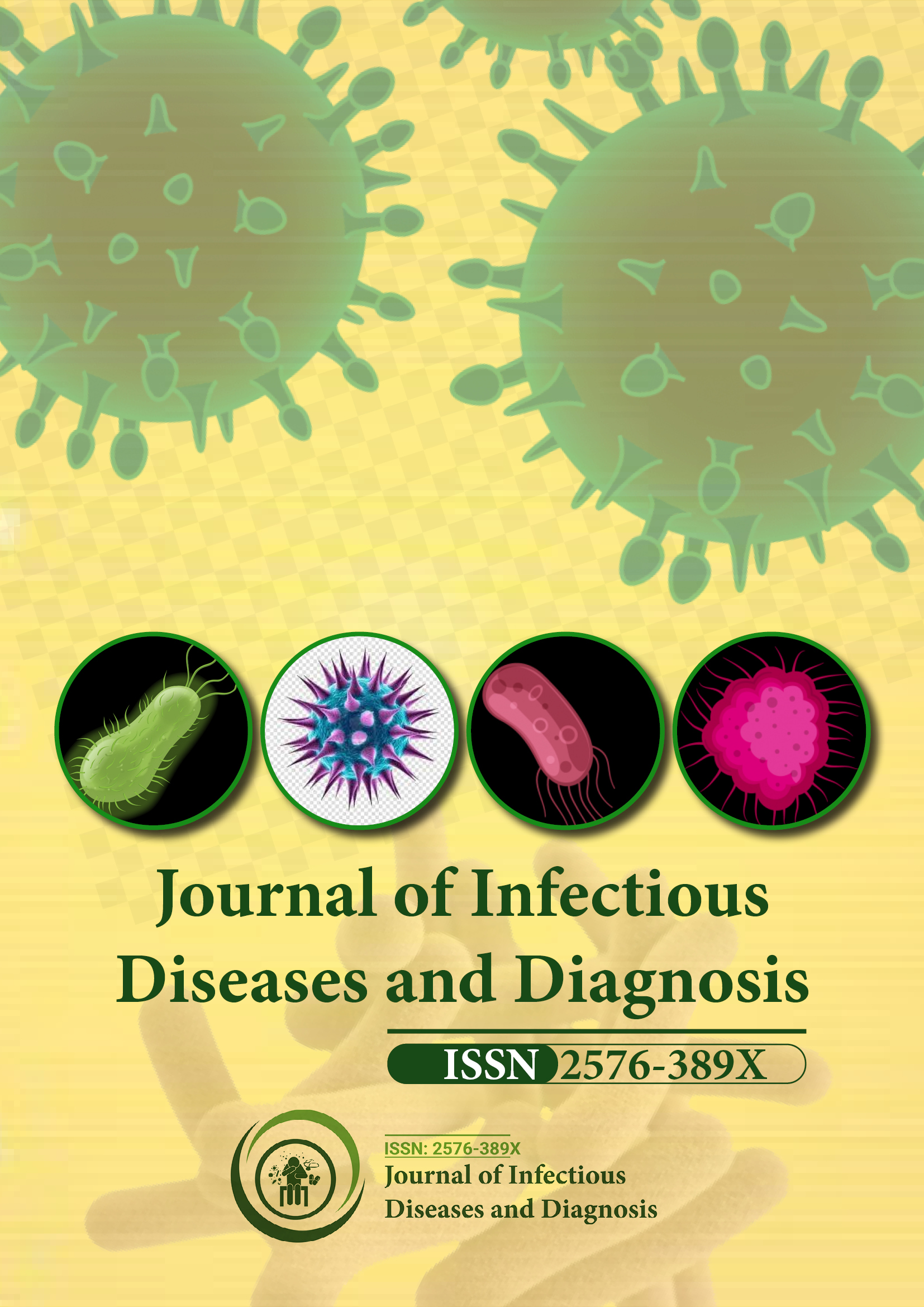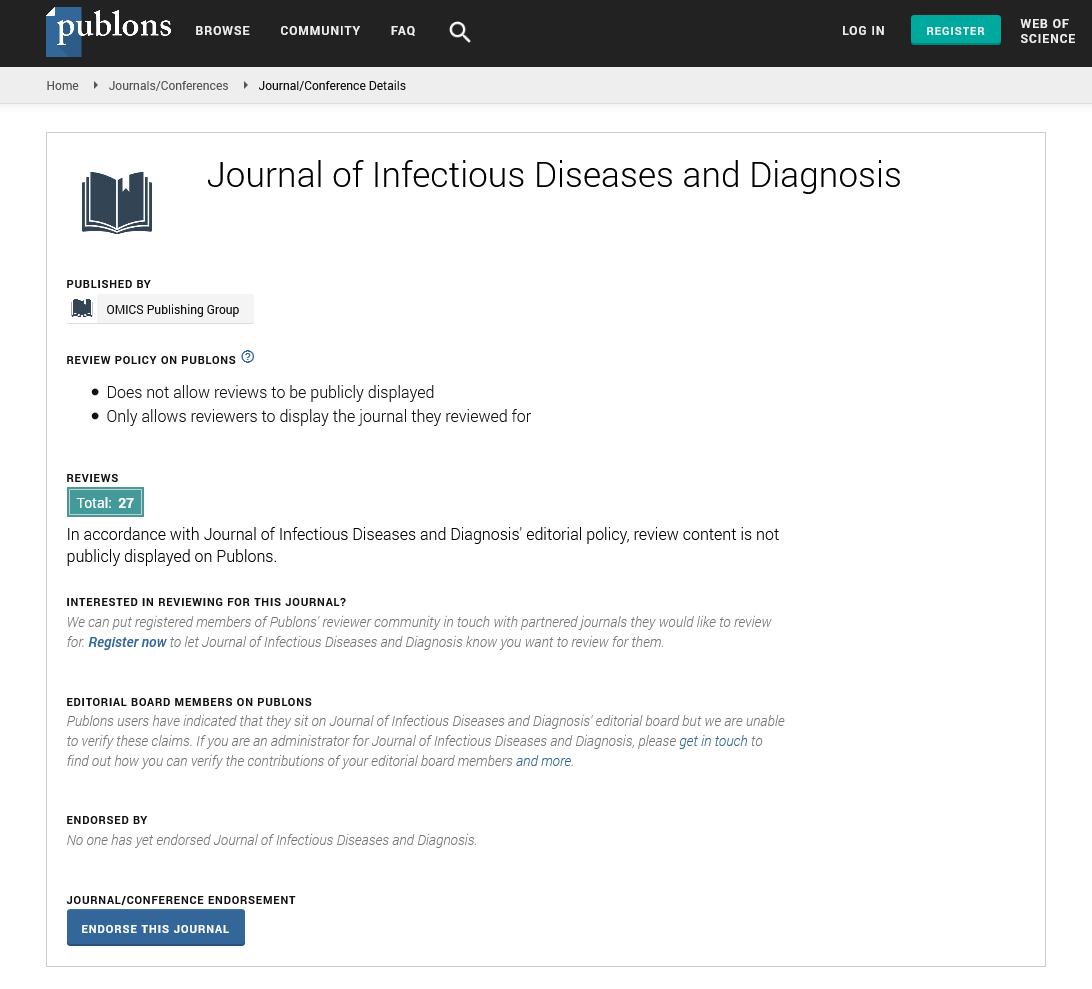Indexed In
- RefSeek
- Hamdard University
- EBSCO A-Z
- Publons
- Euro Pub
- Google Scholar
Useful Links
Share This Page
Journal Flyer

Open Access Journals
- Agri and Aquaculture
- Biochemistry
- Bioinformatics & Systems Biology
- Business & Management
- Chemistry
- Clinical Sciences
- Engineering
- Food & Nutrition
- General Science
- Genetics & Molecular Biology
- Immunology & Microbiology
- Medical Sciences
- Neuroscience & Psychology
- Nursing & Health Care
- Pharmaceutical Sciences
Opinion Article - (2023) Volume 8, Issue 1
Intervention of Infection Surveillance in Health Care System
Jian Chen*Received: 02-Jan-2023, Manuscript No. JIDD-22-19884; Editor assigned: 04-Jan-2023, Pre QC No. JIDD-22-19884 (PQ); Reviewed: 18-Jan-2023, QC No. JIDD-22-19884; Revised: 25-Jan-2023, Manuscript No. JIDD-22-19884 (R); Published: 01-Feb-2023, DOI: 10.35248/2576-389X.23.08.192
About the Study
An infection surveillance program is a system for identifying, tracking, and preventing the spread of infections in healthcare settings. It is an essential component of infection control and prevention, and it plays a vital role in ensuring patient safety and improving outcomes. In this article, we will discuss the key components of an infection surveillance program, the benefits and challenges of implementing such a program, and best practices for ensuring its success.
The first step in establishing an infection surveillance program is to define the scope of the program. This includes identifying the types of infections that will be monitored, as well as the populations that will be included in the surveillance. For example, the program may focus on infections that are common in a particular healthcare setting, such as Healthcare-Associated Infections (HAIs) in hospitals or long-term care facilities, or infections that are specific to a particular patient population, such as infections in immune-compromised patients.
Once the scope of the program has been defined, the next step is to develop a system for identifying and tracking infections. This may include the use of standardized infection control protocols, as well as the collection and analysis of data on infection rates. The data collected should include information on the type of infection, the patient population affected, the location of the infection, and any other relevant information. This data can be used to identify trends and patterns in infection rates, which can inform the development of interventions to prevent the spread of infections.
Interventions to prevent the spread of infections include hand hygiene, use of personal protective equipment, and environmental cleaning. These interventions should be evidence-based and should be implemented in a consistent manner across the healthcare setting. It is also important to educate staff and patients on the importance of infection control and the specific interventions that are being implemented.
The effectiveness of the infection surveillance program should be regularly evaluated and monitored. This may include reviewing data on infection rates, as well as assessing the impact of interventions on infection rates. Any identified trends or patterns in infection rates should be investigated and addressed promptly. Additionally, the program should be reviewed and updated regularly to ensure that it is aligned with current best practices and guidelines.
Effective communication is crucial for the success of an infection surveillance program. This includes sharing information about infection rates and trends with staff, patients, and families. This can help to improve transparency and trust, and it can also help to raise awareness about the importance of infection control and prevention. Additionally, it is important to collaborate with other healthcare organizations and public health agencies to share information and best practices.
Implementing an infection surveillance program can be challenging, particularly in resource-limited settings. Limited resources, lack of staff buy-in, and difficulty in obtaining accurate data are all potential obstacles that may need to be addressed. However, with proper planning, implementation, and evaluation, an effective infection surveillance program can be established to improve patient safety and outcomes in healthcare settings.
In summary, an infection surveillance program is a vital component of infection control and prevention in healthcare settings. It includes identifying, tracking and preventing the spread of infections. Key components of an infection surveillance program include: defining the scope of the program, developing a system for identifying and tracking infections, implementing interventions to prevent the spread of infections, monitoring and evaluating the effectiveness of the program, communicating findings to staff and patients, and collaborating with other organizations. Implementing an infection surveillance program can be challenging, but with proper planning, implementation, and evaluation, an effective infection surveillance program can be established to improve patient safety and outcomes.
Citation: Chen J (2023) Intervention of Infection Surveillance Program in Health Care System. J Infect Dis Diagn. 8:192.
Copyright: © 2023 Chen J. This is an open-access article distributed under the terms of the Creative Commons Attribution License, which permits unrestricted use, distribution, and reproduction in any medium, provided the original author and source are credited.

